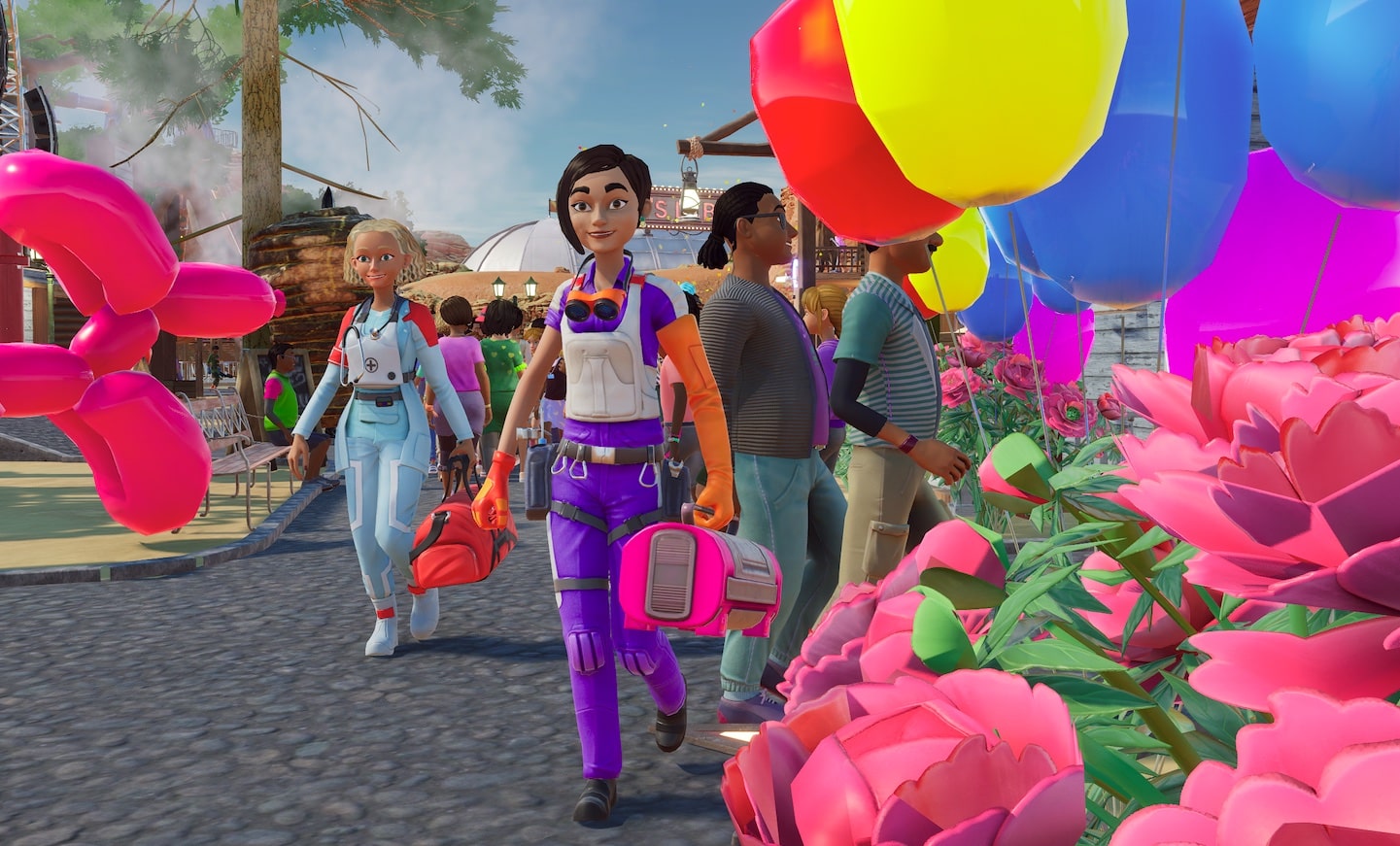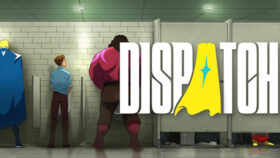Park Beyond is an invitation to the rollercoaster playground of your childhood dreams. It bursts with colour and personality, and a sense of easy, creative freedom that lets you build and design a theme park at your own whims. But while it lends the tools to create something great, the possibilities of Park Beyond are limited by a strange approach to in-game micromanagement, and a seeming lack of balance in its launch iteration.
There are two key modes in Park Beyond: Sandbox and Campaign. In Sandbox, it’s a creative free-for-all. With no bounds, you can spend your time building out a park, making decisions about the venue’s appeal, target market, theming, and general design. It’s a pleasure to create parks in this fashion, thanks to a good path-snapping system and smooth ride placement system. Park Beyond excels in this area, with zero barriers to setting up your dream park and allowing your customers to roll in.
It’s also strongly supported by a progression system that feels deeply rewarding. The larger and more appealing your park becomes (based on cleanliness and fun), the more rewards you’ll unlock. As you advance the level of entertainment with new rides, better staff, and more ‘trendy’ features, you’ll be able to unlock ‘lab upgrades’ that include newer shops, rides, decorations, and other items.
The hunt for these upgrades is compelling, and provides a reason to keep expanding your park, and hunting for new ‘impossifications’ – one of the game’s main hooks.
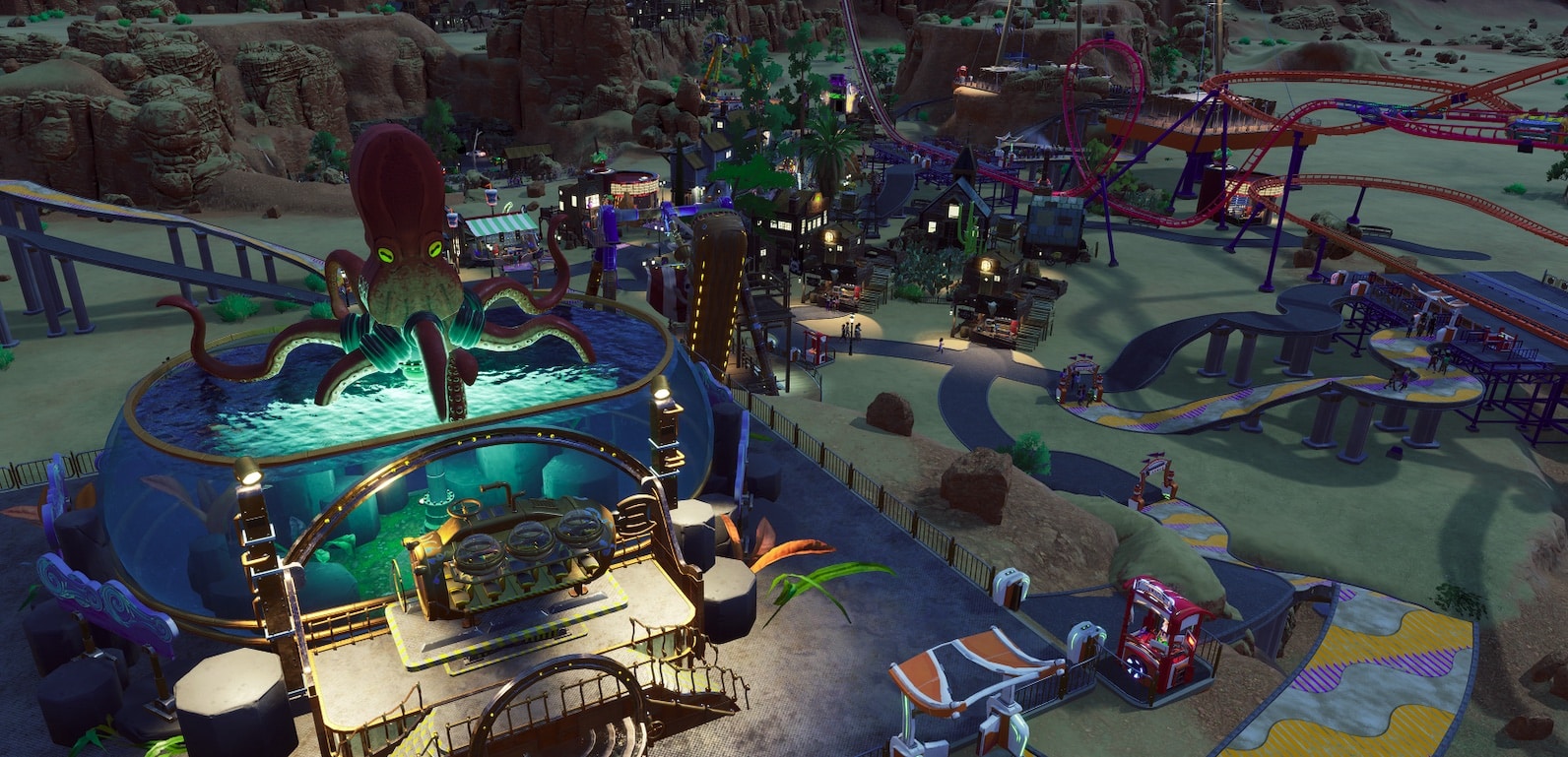
Once you impossify a ride, you improve its appeal and overall design, spicing up your park and attracting even more new guests. The Kraken ride, when impossified, will have an actual giant Kraken at its centre, throwing riders into the air. The Ring of Fire becomes larger and more dangerous-looking. Meanwhile, staff members get super-upgrades like mechanical claws for fixing rides, and food stalls get eye-catching, sky-high advertising attachments. But the danger in impossifying, and in growing your park exponentially, is severe and catastrophic financial failure.
In Park Beyond, it’s an ever-present risk that rears its head at the worst of times.
Now Trending
You can, essentially, breeze your way through the opening chapters of Park Beyond‘s main campaign. Here the flow mostly resembles its sandbox counterpart, with a few key changes. In each chapter, you’re given a fully-voiced tale about the land on which you’ll build your next park. You’ll choose a target market (some rides appeal to adults, while others appeal to teens, families, or children), then set a number of goals.
Read: Park Beyond is a wild RollerCoaster Tycoon successor
In one scenario, you’re tasked with repairing a restoring an abandoned theme park with garbage everywhere, and several faltering rides. To restore it to glory, you’ll need to send in janitors to sweep the streets, hire mechanics to keep your rides in working order, and eventually build out your vision for a thriving park while monitoring your cash flow and ensuring you can pay off your debts.
That last point is essential – as money doesn’t come easily in this park sim.
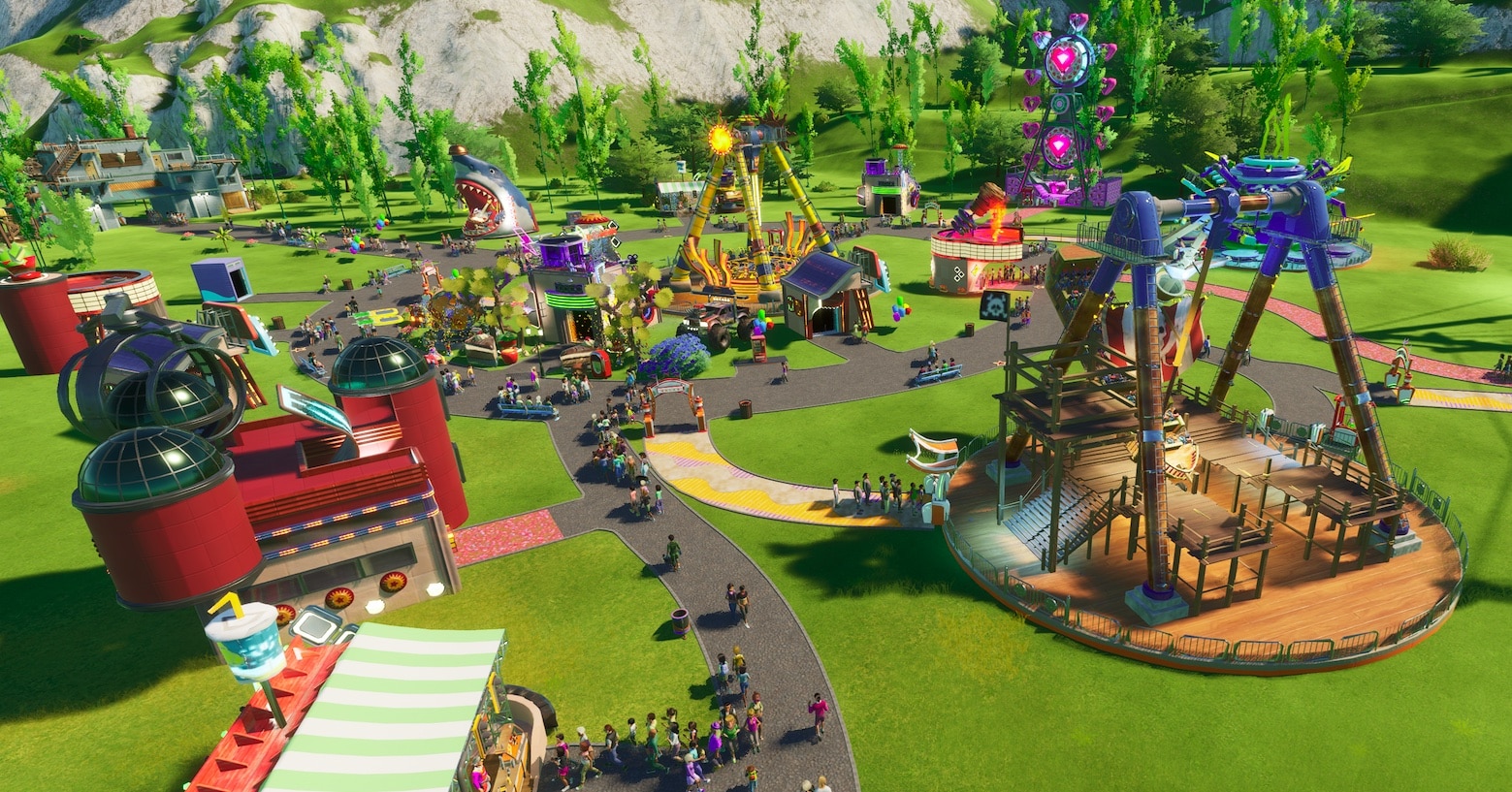
The success of your parks are based on multiple moving factors – most notably, ‘trends’. Park visitors are fickle – extremely fickle – and can pick and choose their favourite rides or food stalls on a whim. Currently, these needs feel very random, whether by bug or design.
You can have an extremely successful ride one moment, and once visitor trends change, it can immediately become an abandoned structure, costing you money in upkeep every month. Should a ride prove successful, you can tempt fate by pushing its price up. Sometimes, this will yield a boost to your finances and steady growth in the long term. Other times, it will immediately lead to the ride becoming abandoned, with visitors refusing to return even if the price goes back down.
Sometimes, your visitors will end up standing still in ride queues, jamming up the woodwork. Other times, they’ll form a rat king and end up circling your park endlessly, creating obstacles for other guests.
Parkgoers have other tricks up their sleeve, too. If a ride is popular but too far out from the ‘centre’ of the park, visitors will not travel along these pathways – even if you provide food, beverages, and other temptations along the way. Sometimes, they’ll refuse to travel a road entirely for reasons that are unclear.
In tackling the fifth main campaign, I set up a haunted house (with a decent fun, amazement, and profitability rating) right next to the entrance of my park, with a few food stalls, chairs, bins, and flowers lining the way for eager guests.
None ever approached it. No-one even walked down the pathway, choosing instead to travel the established route to other parts of the park. They say ‘build, and they will come’ – but my visitors proved the exception to the rule. They also seemingly refused to get with the ‘trending’ food items, as when a seafood craze began in my park, they didn’t bat an eyelid at a newly-established seafood stall.
Despite analysing trends, and spending hours micromanaging rides, establishing price points, building new rides, impossifying staff, rides, and stalls, I found myself hitting a massive brick wall in the later stages of Park Beyond‘s campaign, for reasons that felt completely out of my control.
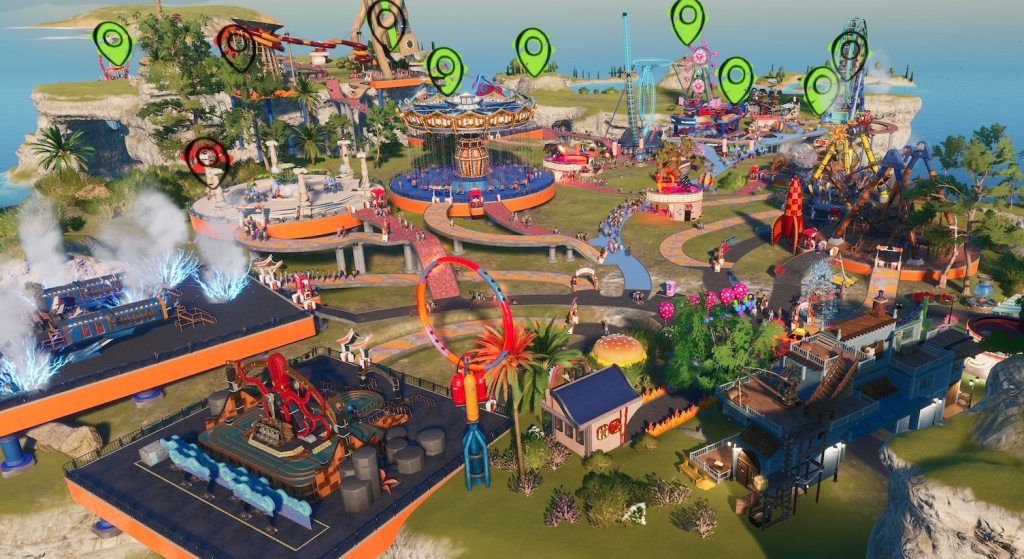
At the height of chapter five, this wall grew even more imposing – thanks to the dastardly introduction of the game’s loan system.
Mounting debts
The setup for the game’s fifth campaign chapter is fairly simple. This time, you’re working from scratch, in a park based on a disparate archipelago. You also have a rival, and he’s looking to purchase the lands around your park to set up a competitor park. Obviously, this isn’t ideal. Your job is to make enough profit to circumvent these attempts by purchasing the land for yourself, spreading out your park to ensure you’re the lone wolf on the isle.
Nabbing these islands from your rival isn’t the difficult part – it’s staying afloat as you spend reams of cash, and attempt to keep your park appeal positive and growing. As mentioned, your park trends are extremely varied, and that means monitoring every part of your park with an eagle eye. But you’ll also have to contend with the following factors:
- If a ride breaks down (due to a lack of mechanics), you may lose precious funds, and your profit can start slipping. This is made worse by the fact that you can’t assign mechanics to rides – only limit their functions to flat rides, rollercoasters, or other tasks. They roam freely, and you’re at the mercy of their desires.
- If you build too far from your park’s centre, few visitors will be willing to travel far.
- If a trend begins, you’ll need to cater to it by building new park features. If you’re not liquid with cash, you won’t be able to take advantage of it, and the rest of your park will suffer.
You’ll need to be flexible to these extreme changes in fortune, and that may lead to the temptation of taking out a loan. But the moment you choose to do this, you’re risking your entire livelihood.
The way loans work in Park Beyond is devastating. Each loan chews up a significant amount of your monthly profits, and if you’re also dealing with unwieldy theme park rides, breakdowns, visitor bugs, and strange trends, you’ll wind up in the negative fairly quickly.
Two bad months, and you’re basically out of the game. If both your funds and your monthly income go beyond zero, there is no clawing back your success. You can demolish as many under-performing rides as much as you like, you’re never getting back into the green. To add insult to this process, you also can’t build any new rides once you hit this point, meaning campaign attempts become fruitless as your money drops exponentially.
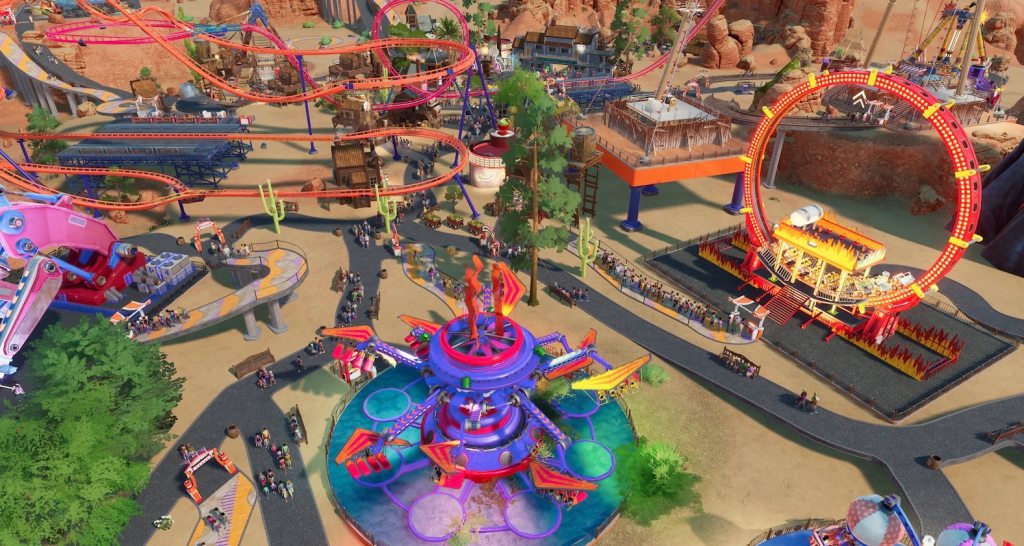
The only way to recover from this devastating campaign is to start over with new tactics, more reservations about taking out a loan, and a slower approach to park design that will allow you to hit every campaign goal and grow steadily. You’ll have to be willing to throw away hours of work, though – and that’s an incredibly tough ask.
Impossification needed
Park Beyond is not irredeemable in its approach to balance – but it’s clear something needs to change before it can realise its true potential. Its mechanics, when utilised with a slow, steady, and informed approach, work wonders. In nearly every facet, the game embodies the fun and fascination of theme parks and management simulators.
It evokes the feeling of playing RollerCoaster Tycoon on an old PC with aplomb, and sports a dazzling art style that makes every impossification feel brilliant and satisfying. The trouble is in the underlying systems backing this simulator, which seem to lack an approachable fairness. As it stands, Park Beyond suffers from fairweather AI that’s quick to throw you to the dogs the moment any small part of your park stops functioning as planned.
As much as it inspires fun, the larger your theme park ambitions grow, the more Park Beyond throws extreme roadblocks in your way. There is still hope it finds a more wholesome balance in the future, but for now, the quest for the perfect park feels unfairly locked away.
Three stars: ★★★
Park Beyond
Platforms: PC, PlayStation 5, Xbox Series X/S
Developer: Limbic Entertainment
Publisher: Bandai Namco Entertainment
Release Date: 16 June 2023
The PC version of Park Beyond was provided and played for the purposes of this review. GamesHub has affiliate partnerships. These do not influence editorial content. GamesHub may earn a small percentage of commission for products purchased via affiliate links.
